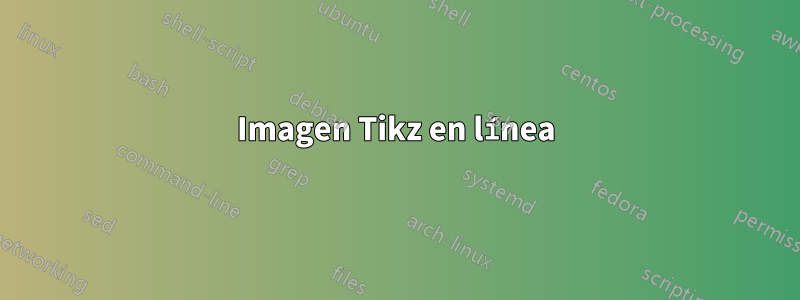
¿Hay alguna forma de colocar un código tikzpicture en línea? Esto es lo que quiero lograr:
Una función convexa se denota por "código tikz para convexidad"
Alguien me dijo que esto es posible. Además, en el tutorial de tikz-pgf he visto muchos códigos tikz en línea. Por ejemplo, en la sección de escala, el autor coloca una elipse giratoria en línea (que está al lado del texto)
¿Cómo se puede lograr esto?
Respuesta1
Úselo tikzpicturecomo entorno o como \tikzmacro en línea.
¡Pero el problema con el estiramiento de la línea es bastante obvio!
\documentclass{article}
\usepackage{tikz}
\usetikzlibrary{shadings}
\begin{document}
A stupid text followed by \begin{tikzpicture}\draw[fill=red,line width=1pt] circle(1ex);\end{tikzpicture}
A stupid text followed by \tikz{\draw[fill=red,line width=1pt] circle(1ex);}
A stupid text followed by another stupid text followed
A stupid text followed by some dots \tikz{%
\foreach \x /\cola in {1/blue,2/yellow,3/red,4/green,5/orange} {%
\shade[ball color=\cola] (\x,0) circle(0.5ex*\x);
}%
}
\end{document}
Respuesta2
Otro ejemplo de un documento de la vida real que tengo:
\documentclass{article}
\usepackage{tikz}
\newcommand{\ground}{%
\begin{tikzpicture}[scale=0.5, baseline=-3mm, thick]
\draw (0,0) -- +(0mm,-4.0mm) {
[yshift=-4mm]
+(-2mm,0mm) -- +(2mm,0mm)
+(-1mm,-1mm) -- +(1mm,-1mm)
+(-0.3mm,-2mm) -- +(0.3mm,-2mm)
};
\end{tikzpicture}%
}
\begin{document}
We have a text here, and then I refer to the ground (\ground) connection point in the instrument. Clearly, the \ground{} symbol will change the spacing...
you can play with the \texttt{scale} and \texttt{baseline=-3mm} parameters in the definition\dots
\end{document}





